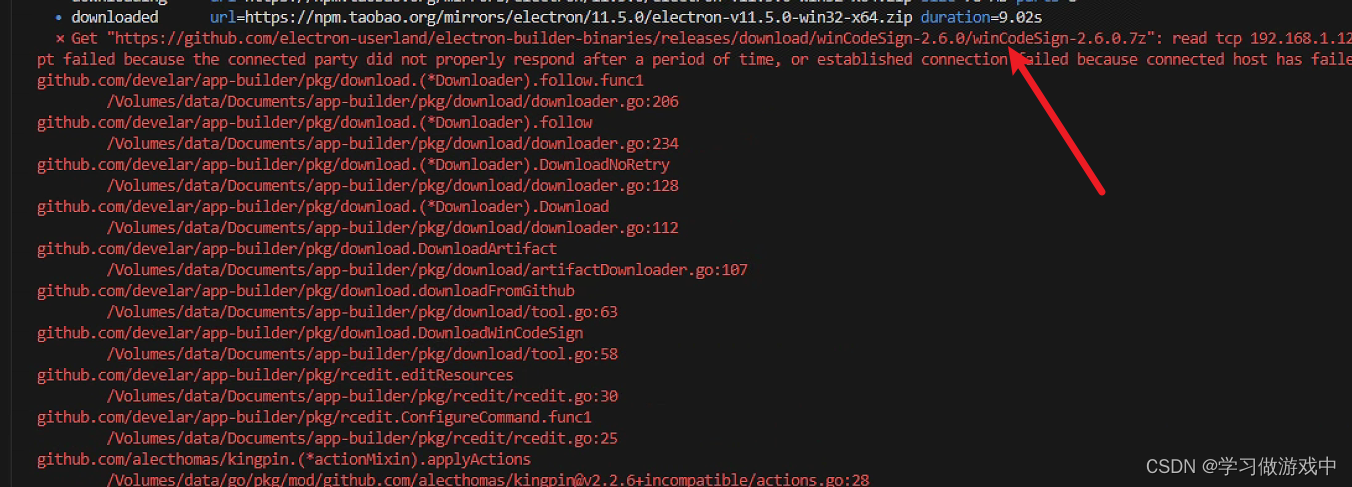list模拟实现代码:
namespace djx
{template<class T>struct list_node{T _data;list_node<T>* _prev;list_node<T>* _next;list_node(const T& x = T()):_data(x),_prev(nullptr),_next(nullptr){}};template<class T,class Ref,class Ptr>struct __list_iterator{typedef list_node<T> Node;typedef __list_iterator<T, Ref, Ptr> self;Node* _node;__list_iterator(Node* node):_node(node){}Ref operator*(){return _node->_data;}Ptr operator->(){return &_node->_data;}self& operator++(){_node = _node->_next;return *this;}self operator++(int){self tmp(*this);_node = _node->_next;return tmp;}self& operator--(){_node = _node->_prev;return *this;}self operator--(int){self tmp(*this);_node = _node->_prev;return tmp;}bool operator!=(const self& s){return _node != s._node;}bool operator==(const self& s){return _node == s._node;}};template<class T>class list{typedef list_node<T> Node;public:typedef __list_iterator<T, T&, T*> iterator;typedef __list_iterator<T, const T&, const T*> const_iterator;iterator begin(){return _head->_next;}iterator end(){return _head;}const_iterator begin()const{return _head->_next;}const_iterator end()const{return _head;}void empty_init(){_head = new Node;_head->_next = _head;_head->_prev = _head;_size = 0;}list(){empty_init();}list(const list<T>& lt){empty_init();for (auto e : lt){push_back(e);}}void swap(list<T>& lt){std::swap(_head, lt._head);std::swap(_size, lt._size);}list<T>& operator=(list<T> lt){swap(lt);return *this;}~list(){clear();delete _head;_head = nullptr;}void clear(){iterator it = begin();while (it != end()){it = erase(it);}}void push_back(const T& x){insert(end(), x);}void push_front(const T& x){insert(begin(), x);}void pop_back(){erase(--end());}void pop_front(){erase(begin());}iterator insert(iterator pos, const T& x){Node* cur = pos._node;Node* newnode = new Node(x);Node* prev = cur->_prev;prev->_next = newnode;newnode->_prev = prev;newnode->_next = cur;cur->_prev = newnode;_size++;return newnode;}iterator erase(iterator pos){Node* cur = pos._node;Node* next = cur->_next;Node* prev = cur->_prev;delete cur;prev->_next = next;next->_prev = prev;_size--;return next;}size_t size(){return _size;}private:Node* _head;size_t _size;};
}源码中的list实现为带头双向链表

list类的对象有两个成员:指向头结点的指针_head,统计数据个数的_size
在模拟实现list之前,需要先模拟实现结点类,迭代器类
结点类:三个成员,_data _prev _next,实现成struct(也是类,不过与class不同的是,它的成员都是公开的,都可以在类外访问),因为这三个成员,在迭代器类中都要使用访问,设it是迭代器,*it就会返回结点中值(_data)的引用,it++(要访问结点中的_next) , it--(要访问结点中的_prev)
template<class T>struct list_node{T _data;list_node<T>* _prev;list_node<T>* _next;list_node(const T& x = T())//x是匿名对象的引用,const延长了匿名对象的生命周期,x销毁,匿名对象才销毁,匿名对象会调用它的构造函数,完成初始化:_data(x),_prev(nullptr),_next(nullptr){}};要写构造函数:list类中的push_back插入数据时,需要new一个结点,并传数值
调用构造函数时,若是直接使用编译器生成的默认构造函数,则无法传参
构造函数的参数设计成缺省参数:有传实参过来就使用此值,没有传参过来就用匿名对象去拷贝构造_data,使用匿名对象去拷贝构造_data的情形:list类中的无参构造函数-->让list中的成员变量_head指向一个new出来的头结点,头结点中不存储任何有效数据,故而new时无需传参
迭代器类:一个成员 _node(结点的指针)
设计成struct:在list类中设计insert和erase时,传参给它们的是iterator迭代器,我们要使用迭代器中的成员变量(结点的指针)即要访问迭代器中的成员,那么设计成struct会比设计成class类方便不少
list的迭代器与vector,string类不同,在模拟实现vector和string的迭代器时,它们可以用原生指针来实现,因为完美契合原生指针的行为,但是模拟实现list的迭代器时,它必须设计成一个类,是对原生指针的封装,原因:
若是list的迭代器就用原生指针来实现,那么*it(it是一个迭代器)得到的不是数据,而是结点
it++ 不能走向下一个数据,故而需要对原生指针进行封装,让*it得到数据,it++,走向下一个数据
template<class T,class Ref,class Ptr>struct __list_iterator{typedef list_node<T> Node;typedef __list_iterator<T, Ref, Ptr> self;Node* _node;__list_iterator(Node* node)//要写带参的构造,因为在list类中实现begin()时,返回值的类型是迭代器,但是我们返回的可以是结点的指针,单参数的构造函数支持隐式类型转换,也可以是迭代器,但是此迭代器中的成员变量(结点的指针)需要和第一个结点的指针一样:_node(node){}Ref operator*()//Ref可以是T&(普通迭代器) const T& (const迭代器){return _node->_data;}Ptr operator->()Ptr可以是T* (普通迭代器) const T* (const迭代器){return &_node->_data;}self& operator++(){_node = _node->_next;return *this;}self operator++(int)//后置++{self tmp(*this);_node = _node->_next;return tmp;//返回迭代器++之前的值}self& operator--(){_node = _node->_prev;return *this;}self operator--(int)//后置--{self tmp(*this);_node = _node->_prev;return tmp;}bool operator!=(const self& s){return _node != s._node;}bool operator==(const self& s){return _node == s._node;}};迭代器有非const对象调用的,也有const对象调用的,二者的区别仅仅是能否修改的问题,*迭代器返回的是数据的引用,const对象调用的迭代器返回的也是数据的引用,但是const修饰的
迭代器-> 返回的是数据的地址,const对象调用的迭代器返回的是const修饰的数据地址
(迭代器可以看作是模拟原生指针的行为,若是数据为自定义类型,那么迭代器->就可以访问到自定义类型对象中的成员,实际上看成是原生指针的迭代器-> 无法做到,但是对原生指针封装而出现的迭代器可以做到,只要迭代器->返回的是数据的指针,那么有了自定义类型对象指针,不就可以访问它里面的成员了吗)
综上来看,我们只需要写一份迭代器类的模板,根据实例化参数的不同,生成不同的迭代器
迭代器需要三个模板参数:T(迭代器类中的成员变量是结点的指针,结点实例化需要)
模板参数 Ref : 迭代器类中重载*运算符所用,重载*运算符的函数要返回数据的引用,而若是const对象的迭代器解引用,就要用const去修饰返回值
模板参数Ptr :迭代器类中重载->运算符所用,重载->运算符的函数返回数据的指针,而若是const对象的迭代器->,也要用const去修饰返回值
那么在list类中,设计普通迭代器,const对象调用的迭代器时,就可以用迭代器类的模板,实例化参数不同就会是完全不同的类型,普通迭代器用迭代器类的模板实例化,传参 T T& T*
const对象调用的迭代器用迭代器类的模板实例化,传参 T const T& const T*
构造函数:
1 无参的构造
让list对象中的成员变量_head指向一个头指针(双向循环)
参照源码list的实现:

void empty_init(){_head = new Node;_head->_next = _head;_head->_prev = _head;_size = 0;}list(){empty_init();}
2 拷贝构造(深拷贝)
list(const list<T>& lt){empty_init();for (auto e : lt){push_back(e);}}析构函数:
~list(){clear();delete _head;//释放头结点_head = nullptr;}void clear()//清除数据{iterator it = begin();while (it != end()){it = erase(it);}}赋值重载:
void swap(list<T>& lt){std::swap(_head, lt._head);std::swap(_size, lt._size);}list<T>& operator=(list<T> lt)///lt是实参的深拷贝,lt销毁会释放掉原本由*this申请的空间{swap(lt);//交换*this和ltreturn *this;}迭代器:
typedef __list_iterator<T, T&, T*> iterator;typedef __list_iterator<T, const T&, const T*> const_iterator;iterator begin(){return _head->_next;}iterator end(){return _head;}const_iterator begin()const{return _head->_next;}const_iterator end()const{return _head;}测试1:
void test1()
{djx::list<int> lt;lt.push_back(1);lt.push_back(2);lt.push_back(3);lt.push_back(4);lt.push_back(5);djx::list<int>:: iterator it = lt.begin();while (it != lt.end()){*it += 20;cout << *it << " ";it++;}cout << endl;for (auto e : lt){cout << e << " ";}cout << endl;
}
测试2:
void test2()
{djx::list<int> lt;lt.push_back(1);lt.push_back(2);lt.push_back(3);lt.push_back(4);lt.push_back(5);djx::list<int> lt1(lt);//拷贝构造for (auto e : lt){cout << e << " ";}cout << endl;for (auto e : lt1){cout << e << " ";}cout << endl;djx::list<int> lt2;lt2.push_back(100);lt2.push_back(200);lt2.push_back(300);lt2.push_back(400);lt2.push_back(500);lt1 = lt2;//赋值重载for (auto e : lt1){cout << e << " ";}cout << endl;for (auto e : lt2){cout << e << " ";}cout << endl;}
插入:
1 push_back
void push_back(const T& x){insert(end(), x);}2 push_front
void push_front(const T& x){insert(begin(), x);}3 insert
iterator insert(iterator pos, const T& x){Node* cur = pos._node;//当前节点的指针Node* newnode = new Node(x);Node* prev = cur->_prev;prev->_next = newnode;newnode->_prev = prev;newnode->_next = cur;cur->_prev = newnode;_size++;return newnode;//单参数的构造函数支持隐式类型转换//或者写成:iterator(newnode)}删除:
1 pop_back
void pop_back(){erase(--end());}2 pop_front
void pop_front(){erase(begin());}3 erase
iterator erase(iterator pos){Node* cur = pos._node;Node* next = cur->_next;Node* prev = cur->_prev;delete cur;prev->_next = next;next->_prev = prev;_size--;return next;//返回下一个数据的地址}测试3:
struct AA
{AA(int a1 = 0, int a2 = 0):_a1(a1), _a2(a2){}int _a1;int _a2;
};void test3()
{djx::list<AA> lt;lt.push_back(AA(1, 1));lt.push_back(AA(2, 2));lt.push_back(AA(3, 3));djx::list<AA>::iterator it = lt.begin();while (it != lt.end()){//cout << (*it)._a1 << " "<<(*it)._a2<<endl;cout << it->_a1 << " " << it->_a2 << endl;it++;}cout << endl;
}

题外:
设计一个打印函数,打印任意list对象
template<typename T>//不可以用class
void print_list(const djx:: list<T>& lt)
{//list<T>未实例化的类模板,编译器不能去它里面去找//编译器就无法list<T>::const_iterator是内嵌类型,还是静态成员变量//前面加一个typename就是告诉编译器,这里是一个类型,等list<T>实例化,再去类里面找typename djx::list<T>::const_iterator it = lt.begin();while (it != lt.end()){cout << *it << " ";it++;}cout << endl;
}打印任意容器
template<typename Container>
void print_container(const Container& con)
{typename Container::const_iterator it = con.begin();while (it != con.end()){cout << *it << " ";it++;}cout << endl;
}测试4:
void test4()
{djx::list<int> lt;lt.push_back(1);lt.push_back(2);lt.push_back(3);lt.push_back(4);print_list(lt);
}
测试5:
void test5()
{djx::list<int> lt;lt.push_back(1);lt.push_back(2);lt.push_back(3);lt.push_back(4);print_container(lt);djx::list<string> lt1;lt1.push_back("1111111111111");lt1.push_back("1111111111111");lt1.push_back("1111111111111");lt1.push_back("1111111111111");lt1.push_back("1111111111111");//print_list(lt1);print_container(lt1);vector<string> v;v.push_back("222222222222222222222");v.push_back("222222222222222222222");v.push_back("222222222222222222222");v.push_back("222222222222222222222");print_container(v);} 










